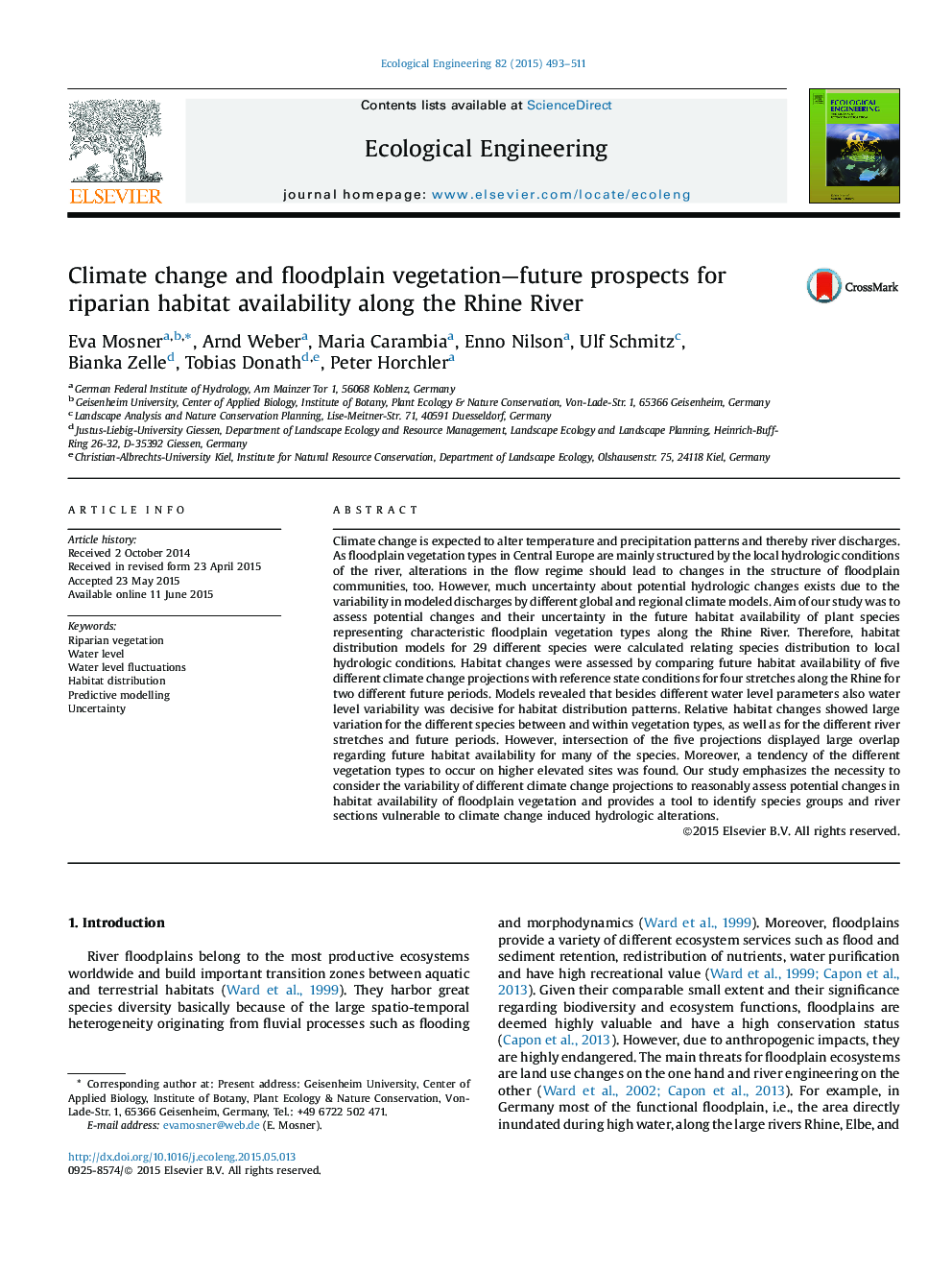| Article ID | Journal | Published Year | Pages | File Type |
|---|---|---|---|---|
| 4389000 | Ecological Engineering | 2015 | 19 Pages |
•Distribution patterns of different floodplain species are best explained by a variety of different water level variables.•Besides water levels, water level fluctuations are decisive for plant species distribution patterns in the floodplain along the Rhine River.•Changes in habitat availability in the future vary for species within and between different vegetation types as well as along the river course and hence transferability between species, even within vegetation types, or locations along the river are restricted.•A tendency for vegetation types to occur on higher elevated sites in the future can be observed.
Climate change is expected to alter temperature and precipitation patterns and thereby river discharges. As floodplain vegetation types in Central Europe are mainly structured by the local hydrologic conditions of the river, alterations in the flow regime should lead to changes in the structure of floodplain communities, too. However, much uncertainty about potential hydrologic changes exists due to the variability in modeled discharges by different global and regional climate models. Aim of our study was to assess potential changes and their uncertainty in the future habitat availability of plant species representing characteristic floodplain vegetation types along the Rhine River. Therefore, habitat distribution models for 29 different species were calculated relating species distribution to local hydrologic conditions. Habitat changes were assessed by comparing future habitat availability of five different climate change projections with reference state conditions for four stretches along the Rhine for two different future periods. Models revealed that besides different water level parameters also water level variability was decisive for habitat distribution patterns. Relative habitat changes showed large variation for the different species between and within vegetation types, as well as for the different river stretches and future periods. However, intersection of the five projections displayed large overlap regarding future habitat availability for many of the species. Moreover, a tendency of the different vegetation types to occur on higher elevated sites was found. Our study emphasizes the necessity to consider the variability of different climate change projections to reasonably assess potential changes in habitat availability of floodplain vegetation and provides a tool to identify species groups and river sections vulnerable to climate change induced hydrologic alterations.
